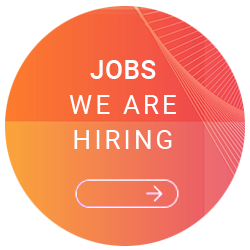Last Updated on 13. November 2025
Digitizing insurance products remains the key prerequisite for increasing efficiency across all product-related processes. Commentary by Marc Philipp Gösswein, member of the management board at mgm technology partners, Industrial Insurance.
What does product digitization in industrial insurance really mean?
The digitization of individual coverage concepts has always been part of almost all of our IT projects with insurers, MGAs, and brokers. Digitization does not mean standardization – a misconception that we still encounter regularly in the market. On the contrary, well-implemented digitization accurately reflects the individuality of product concepts and makes them processable at the data field level— at least that’s how we, at mgm technology partners, do it.
This deeply structured mapping of product information (also known as a “digital twin”) is a prerequisite for:
- Automated processes in tendering, billing, endorsements, and claims – triggered by processable data.
- Validations, relevant e.g. for mapping underwriting guidelines, checking data entries such as possible sums insured, checking payment instructions in the event of a claim.
- The use of AI techniques, for example for the automatic import and mapping of external data sources – in the simplest case, Excel uploads directly into the systems.
Why product digitization has yet to make a breakthrough
To date, the digitization of product structures has rarely been implemented across the industrial insurance industry. The reasons for the lack of “serial production” of digital products are easy to find:
- Insufficient prioritization of digitization,
- time constraints in the business departments, and
- Inadequate technical requirements
And last but not least, misjudged technical complexity in planned projects is also an obstacle.
How can technical and functional complexity be addressed?
Path 1: No global product models in the industrial sector
We understand that a global product model is also an appealing idea for industrial insurance and is therefore part of some project initiatives. It raises hopes that, similar to the private customer business, a central location can be created, a kind of “sacred” digital product library from which the right product can be selected and newly created products can be added. To date, we are not aware of any company that has succeeded in technically implementing such a complex model and permanently transferring it into operational use.
Our many years of project experience in commercial and industrial insurance show that when the focus is on the immediate mapping of concrete models, insurers, MGAs, and brokers create sustainable digital products. In addition, we have had good experiences with central wording and clause management. This makes it possible to map individuality (e.g., product variants in individual lines of business or broker wordings with individual service components) while maintaining an overview.
The article “Data models: The business basis for industrial brokers and insurers” provides excellent insight and practical tips on data models.
Path 2: Scaling by connecting digital product models with value-adding processes
A digital product is not primarily intended to facilitate pricing or even automate it in the commercial sector. The key lever for greater efficiency lies in connecting it to value-adding technical processes and automating them. Only then do opportunities open up, such as:
- In the tender phase: Automation of inquiry and risk information in the systems and preparation of quotations.
- In underwriting: Automated analysis of risk information in combination with automatic validation of the implemented underwriting rules.
- In portfolio management: Automated endorsement processes (e.g., revenue adjustments, coverage changes, wording adjustments) across different lines of business.
- In billing: Automated review of billing processes.
- In the event of a claim: Automated coverage checks.
- In data analysis: In-depth product and claims analyses.
What factors do all successful product digitization projects in the industrial insurance industry have in common?
To make a project initiative successful, we recommend moving away from typical “beliefs” such as a global product model or even a global system for the business (typical especially for the composite sector). These impose too much complexity on initiatives. Instead, planning should be manageable, using flexible technology approaches, technically competent partners with experience, and focused use of internal resources.
If you would like to learn more about successful implementation, you will find practical insights in the article “Köln.Assekuranz and mgm: Digitalization in industrial insurance.”.
In-depth information and personal contact
Product digitalization remains one of the key topics for the future of industrial insurance – both professionally and technologically. If you would like more detailed information, you can find further details on the mgm technology partners – Industrial Insurance website.
I am also available for personal discussions via LinkedIn.







